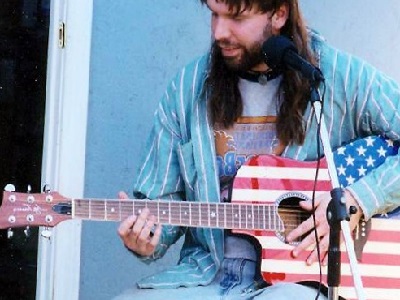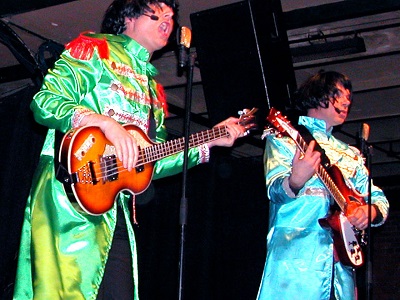Ska Guitar Lessons
 Somewhere between punk and reggae, there is a genre. This style fuses the fast edge of punk with the groove and melody of reggae. This is ska.
Somewhere between punk and reggae, there is a genre. This style fuses the fast edge of punk with the groove and melody of reggae. This is ska.
Ska guitar is a fun, exciting, and above all extremely simple style of music. The signature ska sound is extremely upbeat, the kind of music that makes you want to move your head.
Ska is that one musical style who is the cheery, goofy, feel good, always makes you smile aunt or uncle.
Brent Mason has done an excellent job creating the videos and tablatures for his classes. The information is definitely there for a student to become a better guitarist.
So How Exactly Do You Play Ska?
Ska, believe it or not, is all in the picking hand. The signature ska feel is achieved through rests. The ska mute is a quick, short mute which cuts the note just shy. Unlike staccato notes, the grooves in ska aren’t shortened note lengths, simply short notes separated by short rests.
You Need to Develop A Sense Of Rhythm
Ska is all about rhythm, and if you have trouble keeping a steady beat, I highly recommend that you take some time to work with a metronome to better your rhythm. A great way to help develop your rhythm, especially for ska is to play eighth notes followed by eighth note rests for full 4/4 measures.
So How Do You Achieve The Ska Mute?
Ska muting can be a bit tricky. While at its core a fairly simple form of music, just like anything else, ska has its slightly less simple aspects. Ska muting is achieved through a mixture of palm muting and resting. When you play a chord, such as a G Major barred chord, normally to rest you would simply choke off the chord by releasing the pressure of your fretting hand.
If you were to do this in ska rhythm playing, you would have a jumbled mess. The key is to keep your picking hand a half of an inch above the strings. Between each C Major you would simply touch down with your palm and silence the strings.
This may sound simple, and it is, but you also need to be sure you are actually muting the strings, not just muffling them. The reason that I said the ska muting technique is a cross between the palm mute and rest is that the ska mute employs the palm muting technique without actually hitting a note; you are simply palm muting silence.
Inverting And Simplifying Chords
 Another ska guitar technique crucial to this genre of music is inverting and simplifying chords. Using our previously mentioned G Major barred chord let’s make a simplified inverted chord. A G Major barred chord consists of the notes G, D, G, B, D, and G.
Another ska guitar technique crucial to this genre of music is inverting and simplifying chords. Using our previously mentioned G Major barred chord let’s make a simplified inverted chord. A G Major barred chord consists of the notes G, D, G, B, D, and G.
Playing this chord, we would bar our forefinger across all of the strings on our third fret, and then play the fifth fret of our A string with our ring finger, the fifth fret of our D string with our pinky, and the fourth fret of our G string with our middle finger.
To invert and simplify this chord, we would simply need to replicate it on higher strings. To do this, we would need the notes G, B, and D. To do this, we would simply unbar the chord, and play the last three highest notes, barring the third fret of our high E and B strings with our forefinger to get the notes G and D, and then fretting the fourth fret of our G string with our middle finger to get the note B. Now we have the same chord, but with only two fingers at work.
Involve Your Wrist Movement
Once you understand how to simplify your chords, the next ska guitar lesson involves wrist movement. Unlike metal, jazz or blue, ska has an almost unruly wrist motion involved. The ska strum is created by two different means.
The first way is to use a traditional punk strum. Punk guitarists often strum chords by lifting and lowering their arms instead of using their wrists. While this isn’t unsafe, it is tiring after a short amount of playing.
The second means is to use a hammering motion with your wrist. When you hammer a nail into wood, your wrist is almost completely limp and moves back and forth with a jerking motion. Ska guitarists often utilize this hammer motion due to the abruptness of chords in the music style.
Ska picking is extremely exaggerated for what it is. You may see some guitarist’s hands flailing, but this is completely unnecessary, and unlike the two given techniques, the torque created by flailing your wrist will cause injury.
Take Note Of The Rests
Our final ska guitar lesson involves rests. As mentioned above, ska utilizes rests between notes. It is important that you develop a good palm muting technique to properly achieve these rests. When playing, try resting your palm against the strings in between notes.
Hold your palm against the strings for the length of the previous chord and then play your next chord, repeating the action. After a bit of practice, you will find that these on and off chord patterns become second nature.
As with all styles of music, the best way to increase your skill is to study other musicians. Watch your favorite bands play and take note over their techniques, then try them out for yourself. Good luck!
Everything You Need to Become a Great Guitar Player…
For the most comprehensive step-by-step guitar training program, we highly recommend Gibon’s Learn & Master Guitar course. This award winning DVD course is currently having a 3-day sale and you get to save $100 off the usual price today!
Click here to find out more information and get the course before this promotion ends…







Leave A Comment